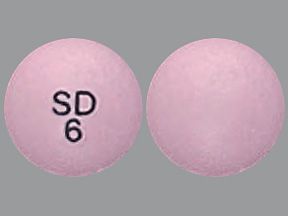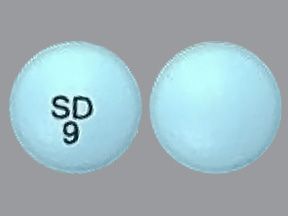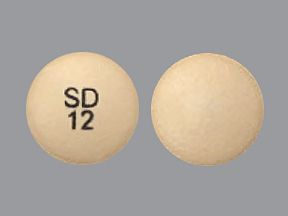Austedo (deutetrabenazine) is a prescription drug that’s taken to treat certain movement disorders. The drug comes as an oral tablet and an extended-release oral tablet. It’s usually taken once or twice per day.
Austedo and Austedo XR* are used in adults to treat:
- chorea related to Huntington’s disease
- tardive dyskinesia
The active ingredient in Austedo is deutetrabenazine. Austedo belongs to a group of drugs called vesicular monoamine transporter 2 (VMAT2) inhibitors.
This article describes the dosages of Austedo, including its forms, strengths, and how to take it. To learn more about Austedo, see this in-depth article.
* Austedo XR is an extended-release (ER) oral tablet. With ER medications, the drug is slowly released into your body over time.
Below are the dosages of Austedo that are typically prescribed. To learn more about typical dosages of Austedo, see the drug’s prescribing information.
Austedo forms
Austedo comes as an oral tablet. Austedo XR comes as an extended-release (ER) oral tablet.
Available strengths of Austedo
Austedo is available in three strengths:
- 6 milligrams (mg)
- 9 mg
- 12 mg
Austedo XR is available in seven strengths:
- 6 mg
- 12 mg
- 24 mg
- 30 mg
- 36 mg
- 42 mg
- 48 mg
What are the typical dosages of Austedo?
Typically, your doctor will start by prescribing a low dosage (also known as a starting dose). Then they’ll adjust your dosing schedule over time to reach the right amount for you. Your doctor will ultimately prescribe the lowest dosage that provides the desired effect.
The information below describes dosages that are commonly used or recommended. However, be sure to take the dosage your doctor prescribes for you. Your doctor will determine the best dosage to fit your needs.
Dosage for chorea related to Huntington’s disease
The recommended dosage of Austedo when used to treat chorea related to Huntington’s disease is described below.
| Drug form | Usual starting dosage | Usual maintenance dosage | Maximum dose per day |
|---|---|---|---|
| oral tablet (Austedo) | 6 mg twice per day (12 mg total) | 12 to 48 mg per day | 48 mg |
| ER oral tablet (Austedo XR) | 12 mg once per day | 12 to 48 mg per day | 48 mg |
Dosage for tardive dyskinesia
The recommended dosage of Austedo when used to treat tardive dyskinesia is described below.
| Drug form | Usual starting dosage | Usual maintenance dosage | Maximum dose per day |
|---|---|---|---|
| oral tablet (Austedo) | 6 mg twice per day (12 mg total) | 12 to 48 mg per day | 48 mg |
| ER oral tablet (Austedo XR) | 12 mg once per day | 12 to 48 mg per day | 48 mg |
Is Austedo used long term?
Yes, Austedo is typically used as a long-term treatment. If you and your doctor determine that Austedo is safe and effective for you, it’s likely that you’ll use it long term.
The dosage of Austedo or Austedo XR you’re prescribed may depend on several factors. These include:
- the type and severity of the condition you’re using Austedo to treat
- how well your symptoms are improving
- side effects you may have from Austedo
- other medications you’re currently taking or have taken in the past
- how your body responds to Austedo
The price you’ll pay for Austedo can vary. Your cost may depend on your treatment plan, the pharmacy you use, and any insurance coverage you have. To save money on your Austedo treatment, explore the coupon options below.
When using Austedo or Austedo XR, always take the drug exactly as your doctor prescribes.
Austedo comes as an oral tablet. Austedo XR comes as an ER oral tablet. Be sure to swallow the tablets whole. You should not chew, crush, or split the tablets.
You may take the drug once or twice per day, depending on the dosage and form you’re prescribed. Try to take your dose at the same time each day. This helps keep a consistent level of the drug in your body over time.
You should take each dose of Austedo with food. Austedo XR can be taken with or without food.
If you miss a dose of Austedo, take the missed dose as soon as you remember. If it’s almost time for your next dose, just skip the one you’ve missed. Then take your usual dose at its regular time. Do not take any extra doses of Austedo to make up for a missed dose.
But if you miss more than 1 week of Austedo doses in a row, tell your doctor right away. Wait for their instructions before starting Austedo again. If you aren’t sure whether you should take a missed dose or skip it, talk with your doctor or pharmacist.
If you need help remembering to take your dose of Austedo on time, try using a medication reminder. This can include setting an alarm, downloading a reminder app, or setting a timer on your phone. A kitchen timer can work, too.
Below are answers to some commonly asked questions about Austedo’s dosage.
How do you take Austedo XR titration kit?
You should take Austedo XR titration kit according to the package instructions. Your doctor may prescribe the titration kit, which is like a starter pack, if you’re first starting Austedo XR.
The kit contains 42 extended-release (ER) oral tablets in blister packs. The blister packs are labeled with instructions for taking Austedo XR for the first 4 weeks of treatment. The oral tablets gradually increase in strength each week.
If you have questions about Austedo XR titration kit, talk with your doctor or pharmacist.
* With ER medications, the drug is slowly released into your body over time.
Do not take more Austedo than your doctor prescribes. Taking more than this can lead to serious side effects.
Symptoms of overdose
Symptoms caused by an overdose can include:
- confusion
- diarrhea, nausea, or vomiting
- feeling more sleepy or tired than usual
- hallucinations (hearing or seeing things that aren’t really there)
- low blood pressure
- slow or uncontrolled movement of the muscles in the arms, head, legs, neck, or trunk
- spasms in the eyeball that may lead to a fixed upward position
- sweating
- swollen, red, or discolored skin
- tremor
What to do in case you take too much Austedo
Call your doctor right away if you think you’ve taken too much Austedo. You can also call 800-222-1222 to reach America’s Poison Centers, or use its online resource. However, if you have severe symptoms, call 911 (or your local emergency number) immediately or go to the nearest emergency room.
The sections above describe the typical dosages provided by the drug manufacturer. If your doctor recommends Austedo for you, they will prescribe the dosage that’s right for you.
Remember, you should not change your dosage of Austedo without your doctor’s approval. Only take Austedo exactly as prescribed. Talk with your doctor if you have questions or concerns about your current dosage.
Here are some examples of questions you may want to ask your doctor:
- Does my dosage of Austedo need to change if I’m taking other drugs with it?
- Is my starting dose of Austedo affected by other medications I’ve taken in the past?
- Will I need to use multiple tablet strengths for my prescribed dose of Austedo?
- What should I do if I miss a dose of Austedo?
Q:
Could my age affect the dosage of Austedo that I’m prescribed?
AnonymousA:
It’s not fully known if your dosage of Austedo should be adjusted based on your age.
Only adults participated in trials for Austedo. But there weren’t enough participants ages 65 and over to conclude whether the response to Austedo is different in older individuals. If you’re 65 years or older, talk with your doctor. Work with them to develop a plan that you feel comfortable with for your dosage of Austedo.
The Healthline Pharmacist TeamAnswers represent the opinions of our medical experts. All content is strictly informational and should not be considered medical advice.Disclaimer: Healthline has made every effort to make certain that all information is factually correct, comprehensive, and up to date. However, this article should not be used as a substitute for the knowledge and expertise of a licensed healthcare professional. You should always consult your doctor or another healthcare professional before taking any medication. The drug information contained herein is subject to change and is not intended to cover all possible uses, directions, precautions, warnings, drug interactions, allergic reactions, or adverse effects. The absence of warnings or other information for a given drug does not indicate that the drug or drug combination is safe, effective, or appropriate for all patients or all specific uses.







